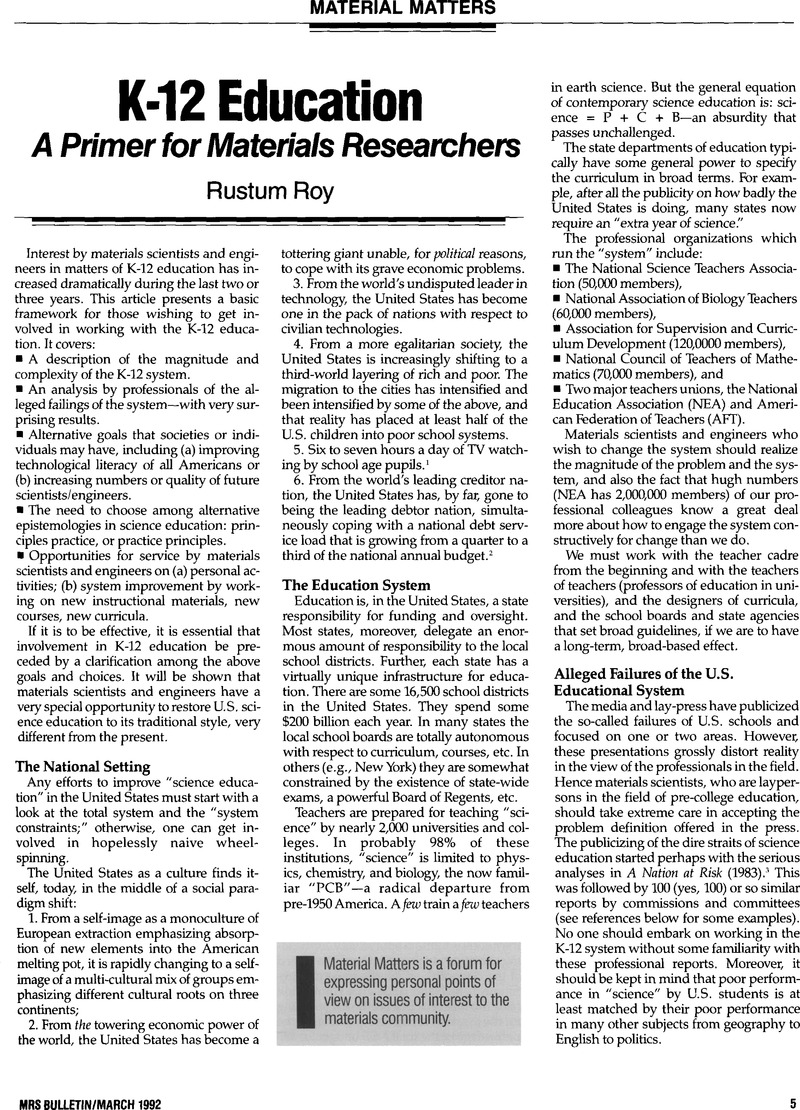Crossref Citations
This article has been cited by the following publications. This list is generated based on data provided by Crossref.
Kaufmann, E.N.
1992.
A Posterminaries in Three Movements.
MRS Bulletin,
Vol. 17,
Issue. 5,
p.
71.
Roy, Rustum
1992.
“Materials” Education: The Second Time Around.
MRS Bulletin,
Vol. 17,
Issue. 9,
p.
22.





